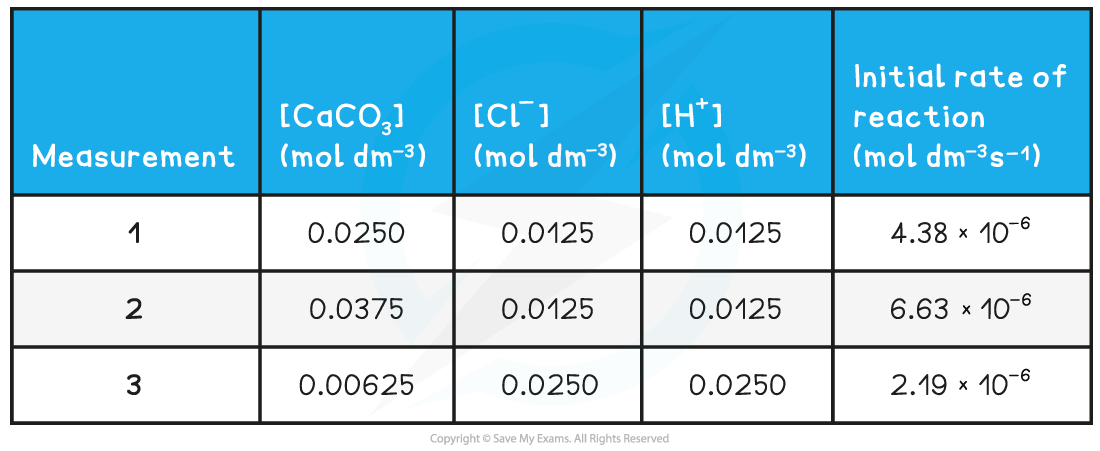Qualitative & Quantitative data
- When recording results of experiment, both quantitative and qualitative data should be obtained
- Quantitative data is obtained from measurements whereas qualitative data is non-numerical information that comes from observations
- Quantitative data is always associated with random errors/uncertainties, determined by the apparatus, and by human limitations such as reaction time
- Where there are several items of data you should record your data in a table with appropriate headings and units:
Data Table showing headings and units

Uncertainties
- Uncertainties are the same as random errors
- Uncertainties express the confidence to which the measurement can be taken
- Treatment of uncertainties depends on the type of instrument used
Using analogue instruments
- Any instruments that have an analogue scale, the uncertainty is taken as half the smallest division on the scale
- For example,
- A thermometer that reads to 1oC, the uncertainty would be +0.5 o C
- A burette that reads to 0.10 mL, the uncertainty would be +0.05 mL
Using digital instruments
- Any instruments that have a digital scale, the uncertainty is taken as the smallest division on the scale
- For example,
- An electronic balance that reads to 0.01 g, the uncertainty would be +0.01 g
Other uncertainties
- Other sources of uncertainty can arise where the judgement of the experimenter is needed to determine a changing property
- For example,
- Judging the end point of a titration by looking at the colour of the indicator
- Controlling a stopwatch in a rate of reaction experiment
- Deciding when to extinguish the flame in an enthalpy of combustion experiment
- These uncertainties are very difficult to quantify, but they should be commented on as a source of error in an evaluation
Exam Tip
Notice that when recording the measurement you should always record it to the same level of precision as the uncertainty. The measurement cannot be any more or less precise than the uncertainty. Even though a burette reads to 0.1 mL, it must be recorded as 0.10 mL, so the last digit is always a 0 or a 5
